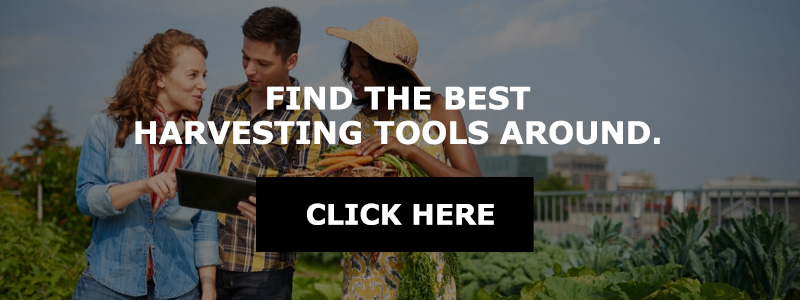
If you’re currently working in an orchard, we’re sure you already know about the most common harvesting tools used in agriculture. It’s possible that you’re using them every day, or at least you are purchasing them for others to use.
But it’s important to remember that there are those who are interested in agriculture who are just starting out, those who might not be knowledgeable regarding the many harvesting tools used in agriculture. Today we’re going to run through some of the most common. (Keep in mind, these are harvesting tools, so we won’t be talking much about getting plants started with grafting tools, frost protection, or Tree-T-Pees).
Fruit Testing Equipment
Before you harvest, you have to know when to harvest. Harvesting dates can change from year to year, usually depending on the temperature and the amount of water trees have received. So without a definite harvest date, someone working in the orchards has to depend on the fruit itself to determine when the harvest should occur.
Penetrometers - One of the most common ways to tell how well fruits are maturing is to use a penetrometer in the field. A penetrometer is pressed against the fruit and records the amount of pressure needed to break the skin. If the pressure is outside the range, then it is not yet ready to be harvested. Penetrometers are often handheld, but we also carry a tabletop version with stands for more accurate testing in a laboratory setting.
Fruit Sizers - Another way to tell whether a fruit is ready to harvest is by checking the size. By comparing the size of the fruit to the recorded sizes of fruit from last year, orchard managers can determine whether or not the fruit is large enough to harvest. We carry excellent fruit sizers right here.
Refractometers - While there are lab-based methods for determining the sugar content of fruit, those require a lot of training and time to use. Use of a refractometer can be an excellent way to determine sugar content throughout the season. Knowing the sugar content of fruit lets those who work in an orchard adjust harvest times and secure workers during the ripeness window.
Picking Gloves
Picking gloves can be a necessity when harvesting certain types of fruit. Sometimes they are used to prevent blisters, while other times it’s to prevent workers from getting cuts from the tree branches. Plus there’s the little problem of grabbing an apple that has a yellowjacket — or three — burrowed inside.
At Frostproof Growers Supply, we carry an excellent variety of gloves in various materials and grips, including nylon and leather. The type of fruit you’re harvesting will help determine which kind is best for your needs.
Fruit Clippers and Harvest Shears
In order to accommodate packing, shipping, and selling times, almost all fruit is picked well before it’s actually ripe. This means that the trees aren’t actually ready to easily give up each piece of fruit, and the stems are therefore still holding on with a strong grip.
That’s why fruit clippers are so important. Because the trees are holding on so tightly, a branch might be torn if the stem fails to come off. And sometimes leaving the stems on is preferable for particular fruits (think “on the vine” tomatoes).
It’s important to get the best harvest shears and fruit clippers you can for orchard work. While most backyard harvesters might only need the shears to hold up to a few dozen pieces of fruit a year, someone in an orchard might clip 10,000 or more pieces of fruit per day.
Picking Bags
Here at our orchard supply company, we carry picking bags that can handle six different weights, from 45 pounds up to 100 pounds. In most cases, the type of bag in use will depend on the strength of the worker. You certainly don’t want someone to pull their back simply because they were encouraged to carry around 100 pounds of apples when they would have been better off carrying around 65 pounds.
Sometimes smaller harvesting bags are better for everyone if the fruit in question is more easily bruised. It’s important to remember that the bottommost fruit is supporting the weight of every fruit above it. Smaller bags can encourage harvesters to make more trips to empty their bags instead of damaging the fruit at the bottom.
Harvest Totes
When picking bags are full, the fruit inside often ends up in harvest totes. Harvest totes are simply large plastic bins that are used to transport fruit from the field back to the trucks or counting station.
Ticket Books and Punchers
In most cases, those who are hired to harvest a crop are getting paid by the number of boxes they fill. In order to keep track of the number they’ve picked, ticket books and hand punchers are used to make sure that proper talleys are being taken.
Are There Other Harvesting Tools?
There’s no doubt that these aren’t the only tools that are used in harvesting. There are obvious ones we haven’t mentioned, such as trucks to take the harvest to market. There are literal cherry pickers and ladders that let people get up to the fruit on top. Of course, there are some harvesting tools that are specific to one particular kind of fruit.
But in general, we’ve hit the most common types of harvesting tools in agriculture. If you’re in need, we’ve probably got it. Click those links above, or see everything we have here!


